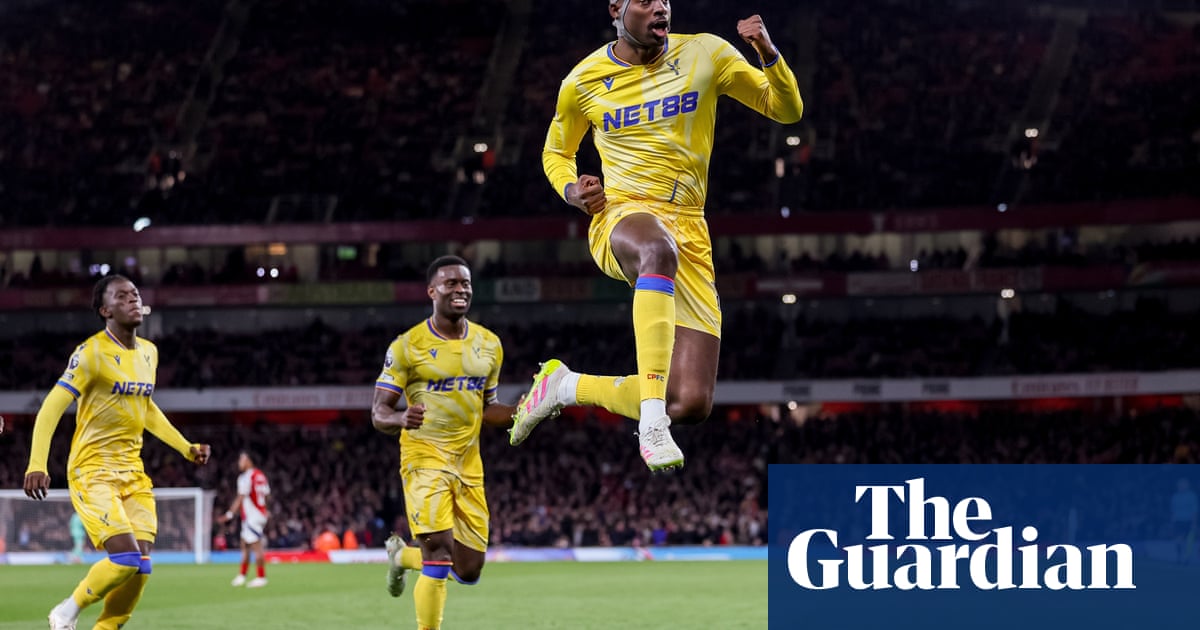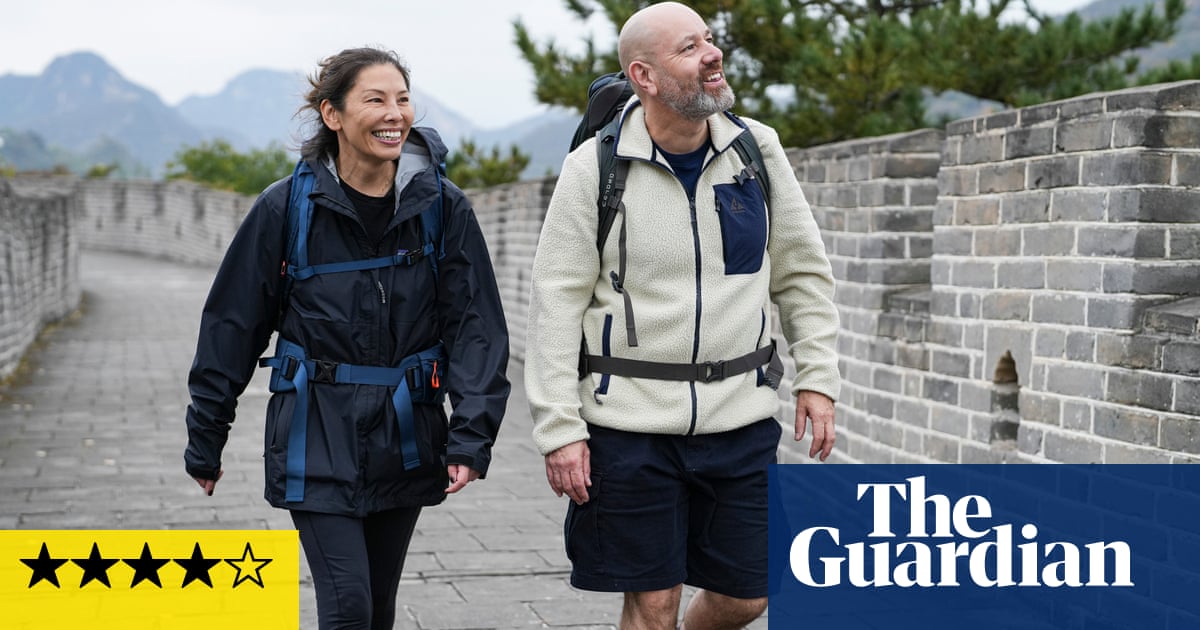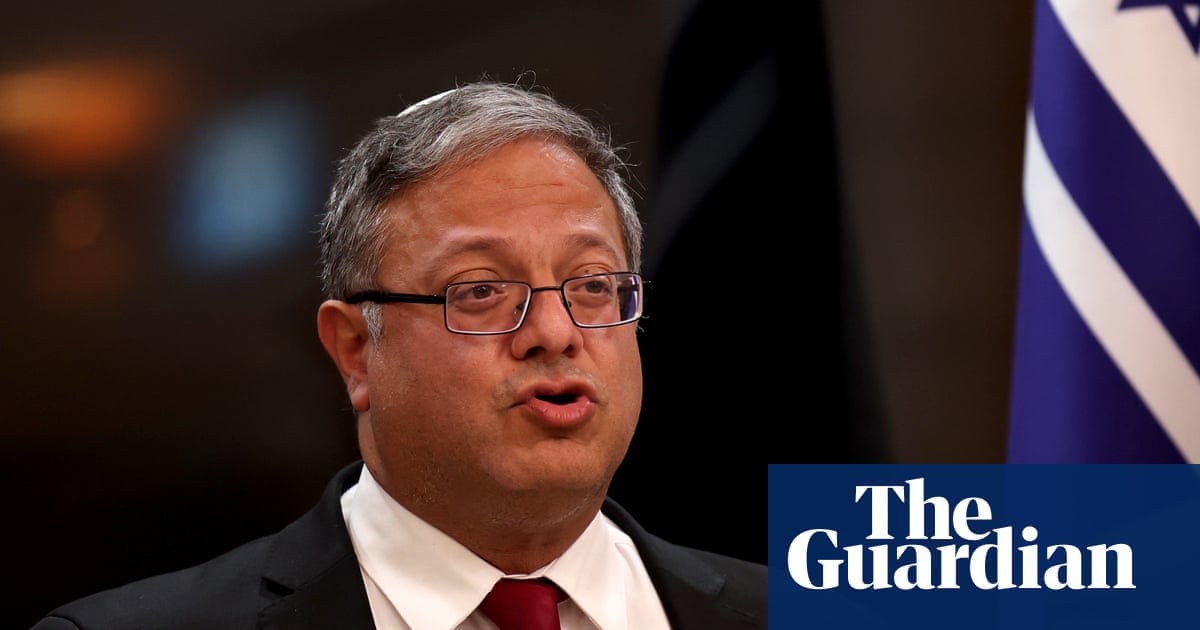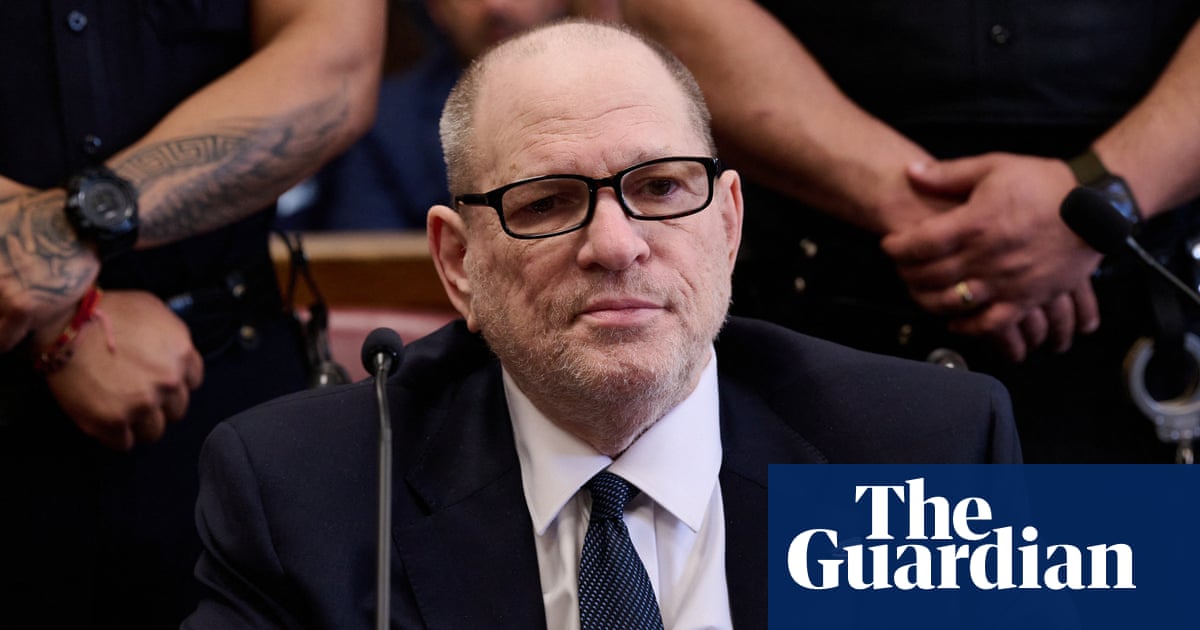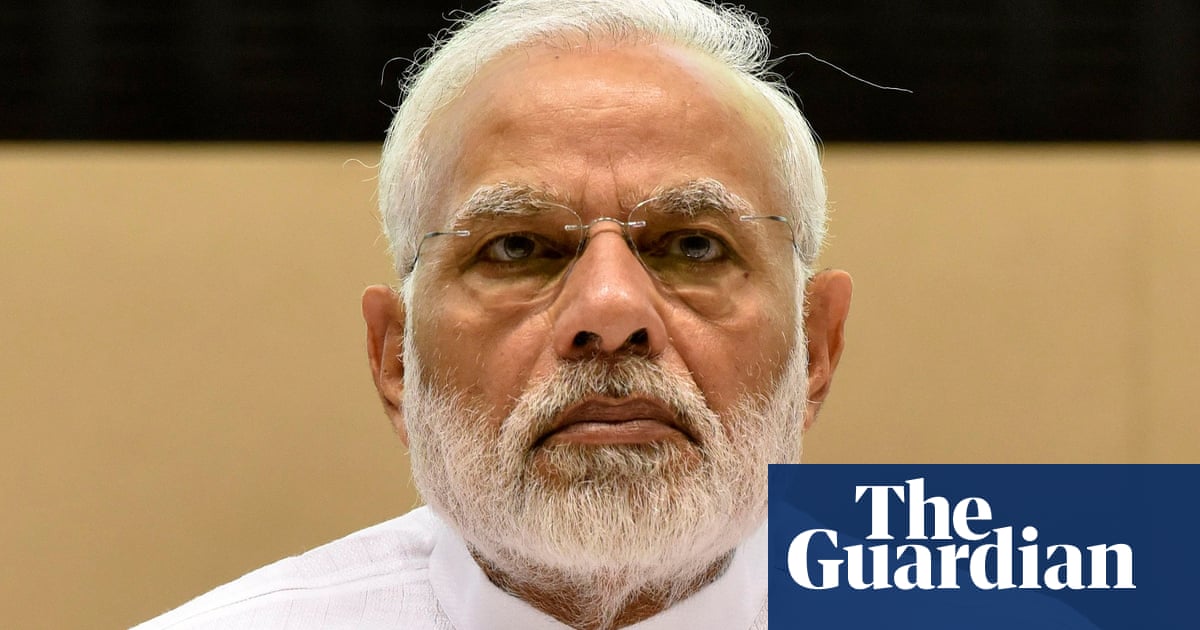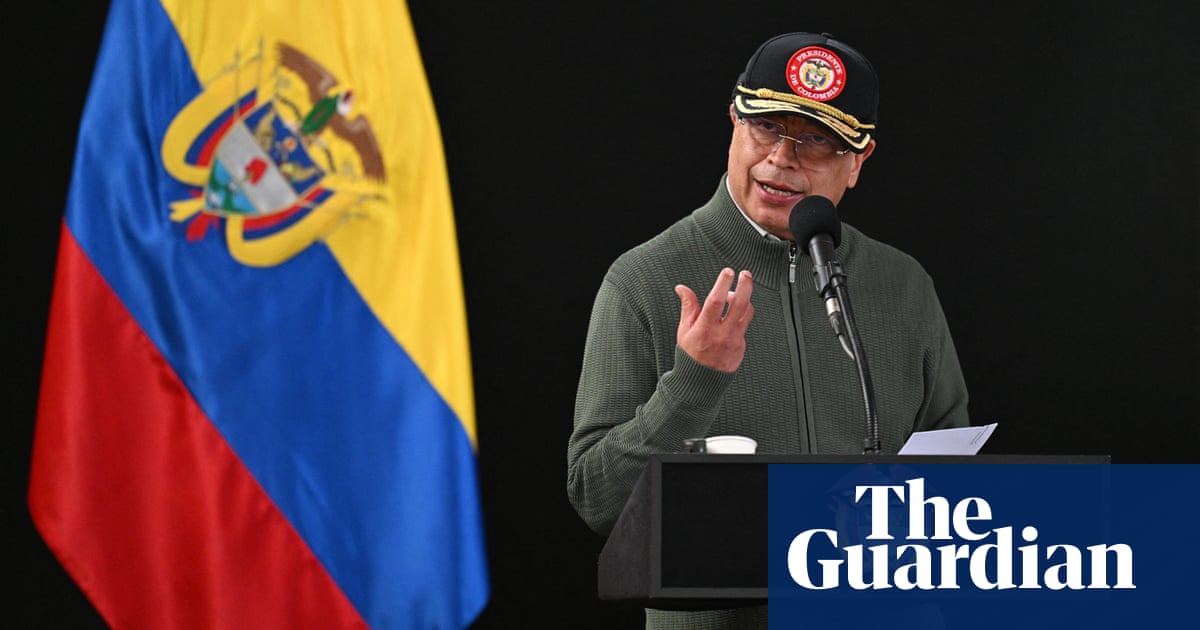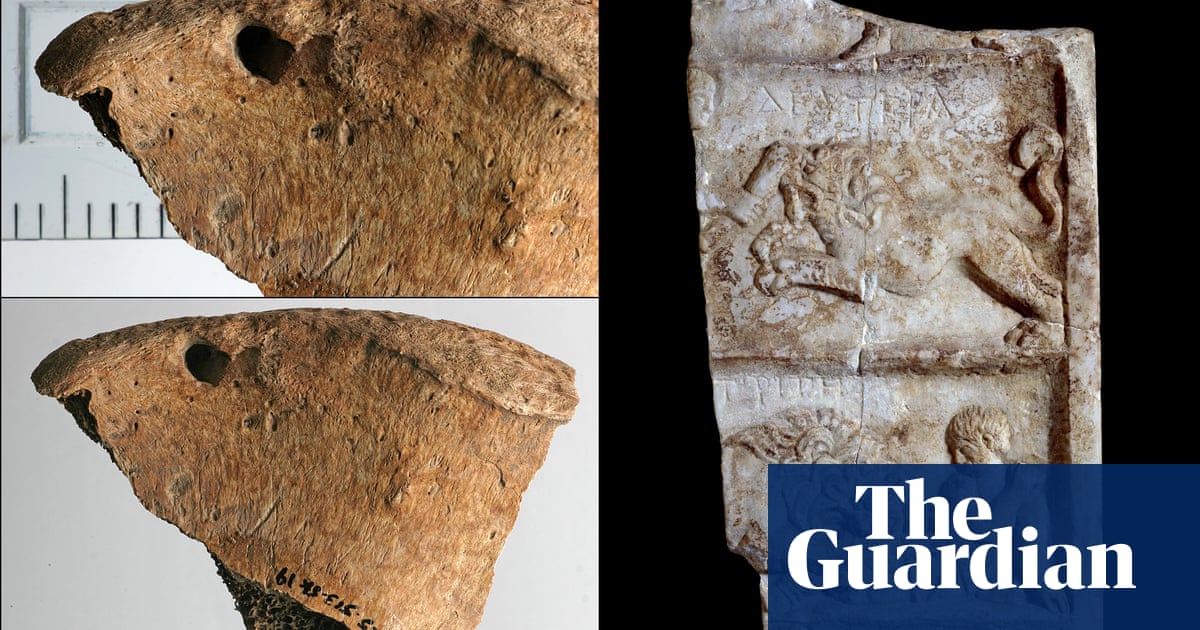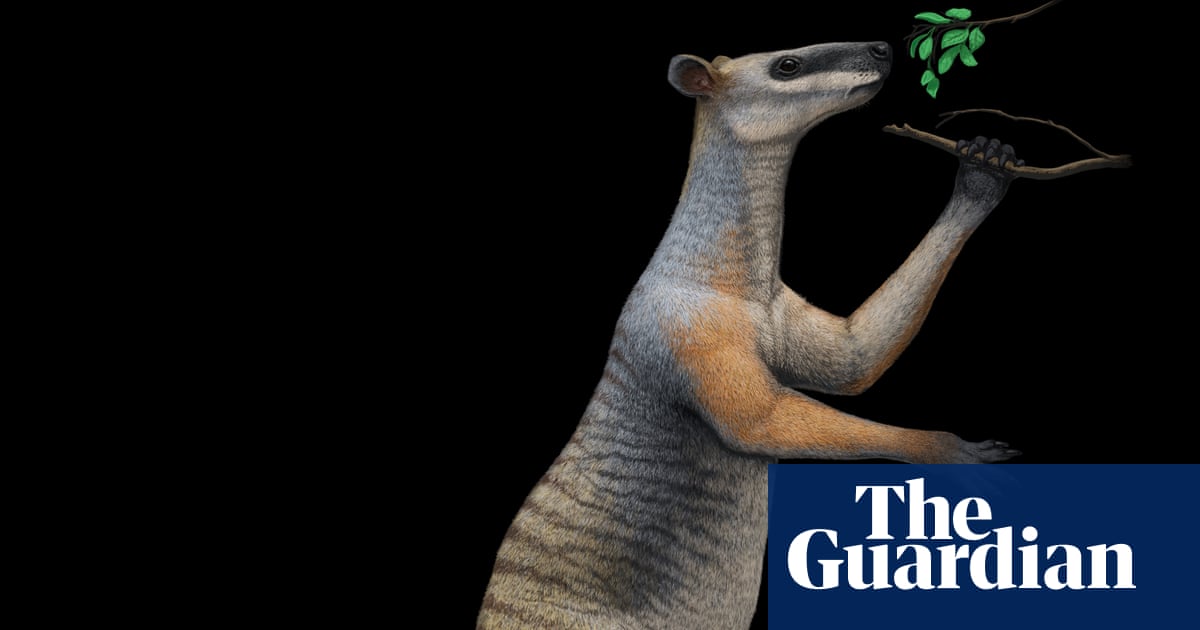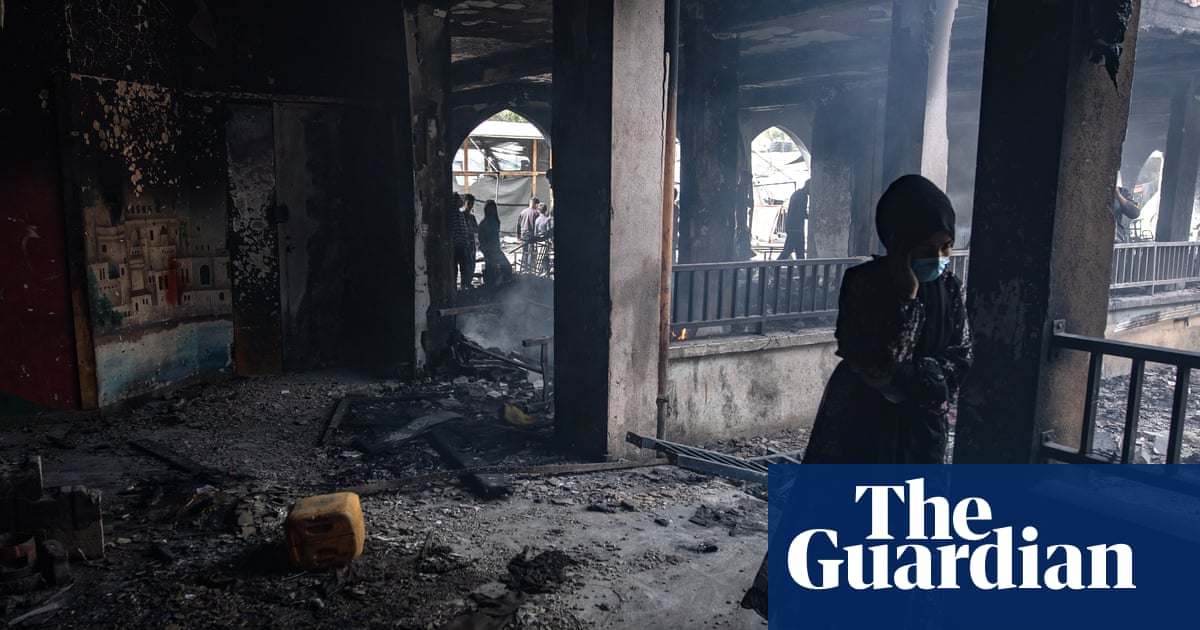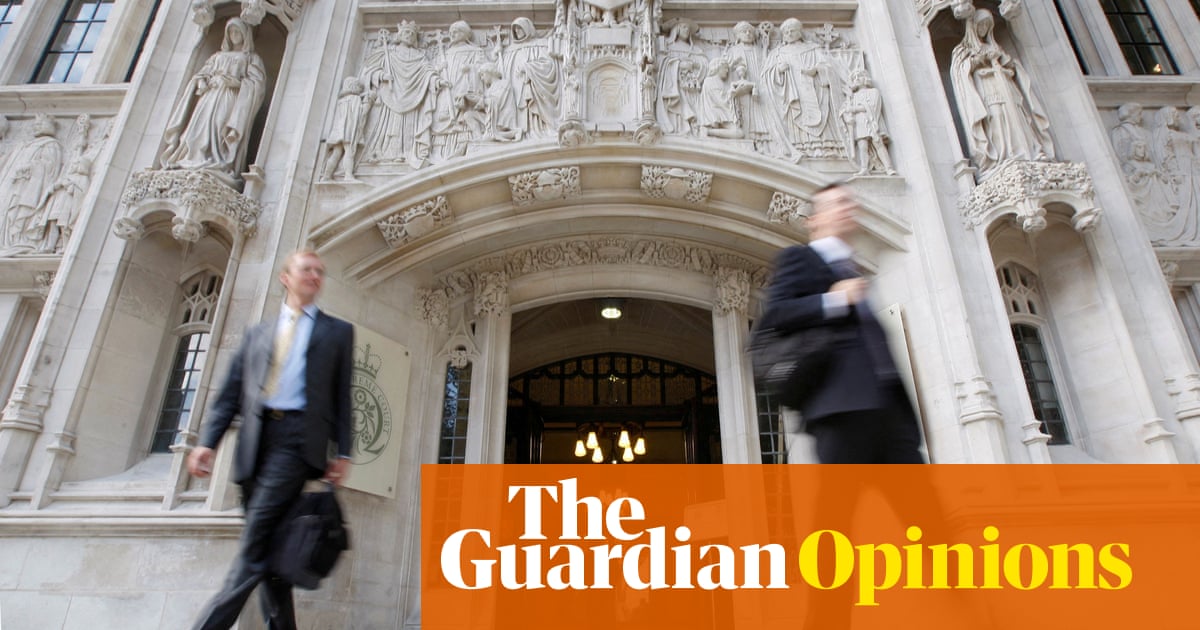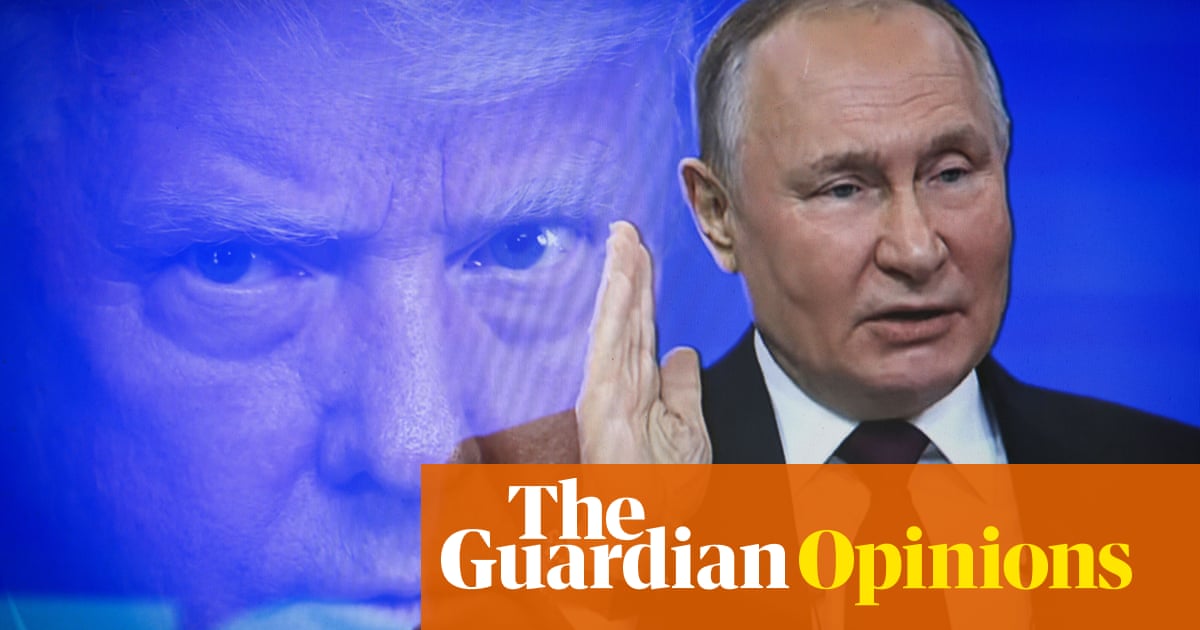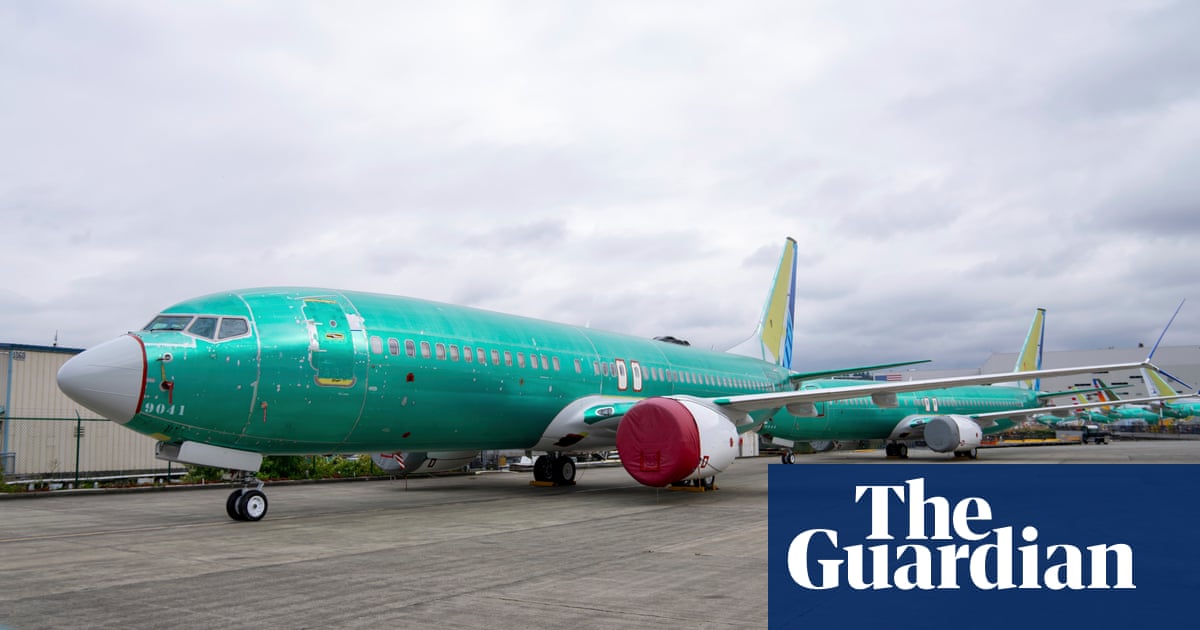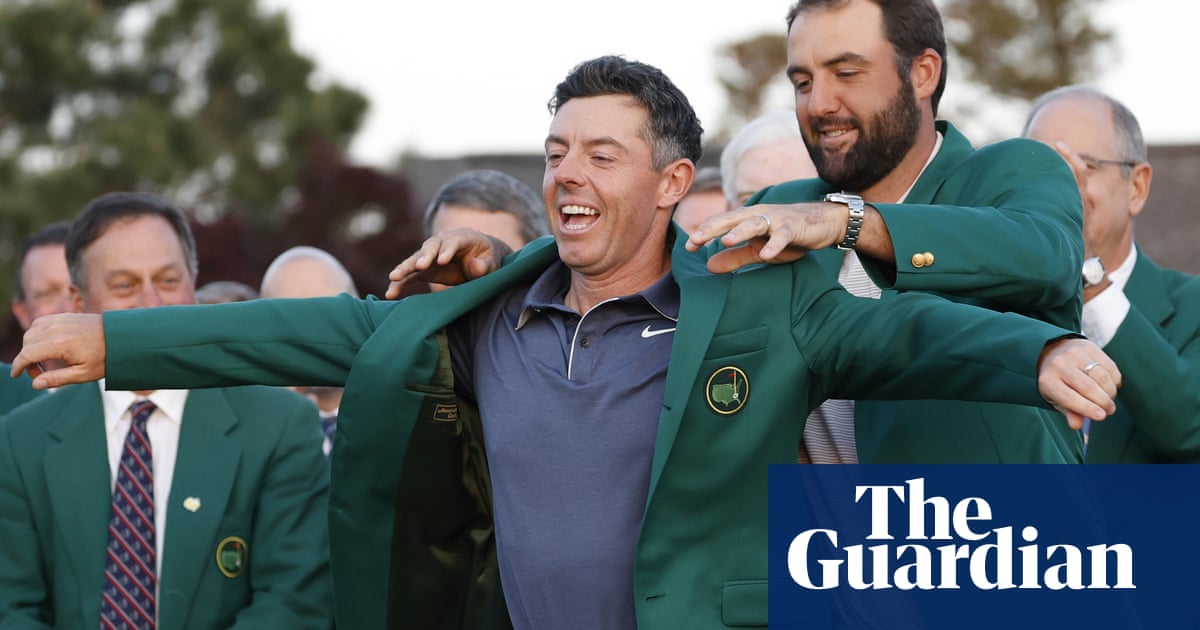In 2011, Donald Trump spoke before an audience of about 1,000 in Las Vegas, teasing a prospective, if fanciful, presidential run. Halfway through a rant over Middle East policy and oil prices, he digressed for a moment on trade with Asia: “China, I said the other day – very, very hard to buy anything, outside of China. Certain other countries also, but China’s, you know, the one.
“And somebody said: ‘What would you do? What could you do?’ So easy. I drop a 25% tax on China. And you know, I said to somebody that it’s really the messenger. The messenger is important. I could have one man say: [falsetto] ‘We’re going to tax you 25%.’ And I could say another: ‘Listen, you motherfuckers, we’re going to tax you 25%!’”
Over the years, Trump has flip-flopped constantly on the standard presidential topics, from the Middle East to healthcare to abortion. But give him this: he has been remarkably consistent on tariffs, a centrepiece of both his domestic and foreign agenda. “This is something that has been stuck in his craw since the 80s,” a friend and former steel executive told the New York Times. “It came from his very own core belief.” A few weeks before the 2024 election, Trump said: “To me, the most beautiful word in the dictionary is ‘tariff’”. During his first term, Trump’s team initiated a series of major duties on Chinese imports. Starting with solar panels and washing machines, they soon extended to steel and aluminum, then nearly half of all goods from China, worth roughly $200bn. By late 2019, the average tariff rate reached 21%. Trump had been true to his word.
Trump’s tariffs have been panned by economists, who warn that they increase inflation and hurt farmers and middle-class households. But Democrats have been reluctant to undo them. The Biden administration not only maintained but expanded Chinese duties, which are now aimed at electric vehicles, silicon chips and lithium batteries. Today, anti-China policies are a rare point of bipartisan consensus. Popular opinion on China has steadily soured since the 2000s. Pew polling shows that 81% of Americans view the country unfavourably, a historic low. Enrolments in Mandarin courses at US universities, which climbed steadily after 1978, have been falling since 2013.
Trump helped set the tone when he announced his candidacy for presidency in 2015. In that speech, the first priority he mentioned was placing restrictions on Chinese trade. He also, infamously, warned of “drugs”, “crime” and “rapists” being sent from Mexico. Trump’s current brand of racism appears to revolve around these two countries. “There are no jobs,” he said, “because China has our jobs and Mexico has our jobs.”
Still, on revisiting that 2015 speech, there is a surprising appearance by a third country, sandwiched between China and Mexico: Japan. “When did we beat Japan at anything?” Trump railed. “They send their cars over by the millions, and what do we do? When was the last time you saw a Chevrolet in Tokyo? It doesn’t exist, folks. They beat us all the time.”
At the time, commentators laughed at Trump’s Japan fixation. They called it “anachronistic,” “out-of-date,” and “odd”. But Japan has been foundational to Trump’s worldview, as historian Jennifer M Miller has argued, dating back to his emergence as a national figure in the 80s. In fact, Japan even provided the template for his views on China, which, decades later, hold massive consequences for the rest of the world.
When Trump published The Art of the Deal in 1987, US-Japan tensions were at their height. Rising imports of Japanese durable goods, especially automobiles, had coincided with the decline of US manufacturing. In the 1970s, global oil shocks had pushed American drivers to buy leaner, more efficient cars from Toyota, Honda, Mazda and Subaru. Trump promoted his book on Larry King and Oprah Winfrey, testing out lines that sound awfully similar to his Las Vegas speech – and his rhetoric as a politician since.
“We’re a debtor nation. Something’s going to happen over the next number of years in this country, because you can’t keep on losing $200bn … and yet we let Japan come in and dump everything right into our markets. It’s not free trade. If you ever go to Japan right now and try to sell something, forget about it, Oprah. Just forget about it. It’s almost impossible. They don’t have laws against it. They just make it impossible. They come over here, they sell their cars, their VCRs, they knock the hell out of our companies.”
Trump’s views were far from extreme at the time. In 1985, the New York Times Magazine ran a cover story by Theodore White, a prize-winning journalist who had covered the Pacific war, headlined: “The danger from Japan”. Accompanying it was an ominous full-page photograph of a Nissan sedan being unloaded at a port in Elizabeth, New Jersey.
A few months later, the US hosted a summit of European, American and Japanese finance officials at New York’s famed Plaza Hotel (which Trump himself would buy in 1988). The resulting Plaza Accord came amid a flurry of bilateral deals meant to “voluntarily” reduce Japanese exports while opening Japan’s market to the world’s goods, thereby driving up domestic consumption – much like American prescriptions for China today. Under pressure from the other G5 countries – France, Germany, the US and UK – Japan’s finance ministry lowered interest rates, and banks greenlit construction projects. The easy money, combined with fewer exports, pushed Japanese businesses into speculative real estate.
At the height of the ensuing bubble, a square foot in Tokyo could sell for up to 350 times as much as one in Manhattan. The Imperial Palace was nominally worth as much as all of California. From 1987 to 1994, the two richest people in the world, according to Fortune, were property magnates Tsutsumi Yoshiaki and Mori Taikichirō. And in 1989, Mitsubishi Estates purchased Rockefeller Center. That same year, when Trump was asked by a reporter about his net worth, he replied: “Who the F knows? I mean, really, who knows how much the Japs will pay for Manhattan property these days?”
Since the 80s, Trump has never made much distinction between his personal business experience and his policy prescriptions. If Trump was getting a bad deal, then so was the entire nation. In a 2018 interview with the Wall Street Journal, he recalled the origins of his trade platform: “I just hate to see our country taken advantage of. I would see cars, you know, pour in from Japan by the millions.”
As the centre of Asian economic dynamism has shifted to China, so has the target of Trump’s ire. “Very, very hard to buy anything,” Trump said in his Vegas speech, “outside of” Chinese goods. When he tried to purchase American-made glass and furniture for his properties, he found only Chinese factories. Before 2016 Trump had never visited China, but he had sent his children there to secure licences for his brand or to negotiate real estate deals only to be stymied each time.
In 1982, at the peak of the Japan panic, two white Chrysler employees, one recently fired, confronted and killed a Chinese American named Vincent Chin in Highland Park, Michigan, near the birthplace of Henry Ford. The episode symbolised, not for the first time, the fungible threat of Chinese, Japanese and otherwise exotic Asian capital in American minds. Trump’s pivot to China has only demonstrated it more bluntly. As he told a reporter during his first term, he saw Japan as “interchangeable with China, interchangeable with other countries. But it’s all the same thing.” His embrace of tariffs has likewise been a constant, even as their target has shifted. “Where are my tariffs?” Trump said in meetings with advisers early during his presidency. “Bring me my tariffs.”
In his second term, Trump has widened the tariff net to include neighbours and ostensible allies Canada and Mexico. Meantime, in his first week in office, Trump threatened tariffs of up to 50% against Colombia after two airplanes with repatriated Colombians were blocked from landing; he has brandished similar threats against Denmark in a harebrained push to purchase Greenland.
Who knows how real these threats are? In December, the Republican senator Tom Cotton, a Trump surrogate, tried to reassure an audience of jittery CEOs that they were merely “an effective negotiating tactic”. Tariffs against China, on the other hand: “That’s a horse of a different colour.”
In 2012, not long after Trump’s rant in Vegas, the Chinese Communist party selected a new leader, 59-year-old politburo member Xi Jinping. In histories of the current trade war, Xi will no doubt be remembered as Trump’s counterpart in nationalist escalation. But in the early years of his rise, US observers were cautiously hopeful that he would be a reformer, receptive to American-style liberalism. The Wall Street Journal reported that in 1985, during a visit to the US as a party official, Xi Jinping had stayed with a family in Muscatine, Iowa, on a tour of corn production techniques. By 2012, his daughter was attending Harvard. He liked Hollywood movies. And he had met Magic Johnson and David Beckham.
Journalists also leaned on what they knew about his father, Xi Zhongxun. The elder Xi had joined the party in the 1920s, rising to high-ranking positions by the 1950s, and claimed revolutionary status to the end of his life. He was also purged during the Cultural Revolution, with severe consequences for his young son. In 1978, Xi Zhongxun was rehabilitated by the newly ascendant Deng Xiaoping. When he was appointed party secretary of Guangdong that year, Xi Zhongxun’s first task was to mobilise capital from Hong Kong, then still a British colony, into the southern province. He helped establish the first experimental “special economic zones” (SEZ) along China’s coasts, including the crown jewel of the SEZs, Shenzhen. He was also aligned with senior reform-minded politicians, who spearheaded political and economic liberalisation in the 1980s. No wonder US observers hoped Xi Jinping would follow in his father’s footsteps. As one veteran American businessman put it: “We all hope the apple doesn’t fall far from the tree.”

On the political front, Xi Jinping has not fulfilled these hopes. He has restricted political expression, spearheaded the repression of Xinjiang, and reasserted state control over the economy and much of everyday life. Yet on the economic front, Xi’s arc can indeed be seen as a continuation of his father’s final legacy. Returning from his trip to Iowa in 1985, Xi Jinping became deputy mayor of Xiamen, the special economic zone with the closest ties to Taiwan and Taiwanese capital. In the years that followed, as he continued to rise through the party ranks, positioned in large coastal cities, Xi was credited with helping US companies establish a foothold in China, including FedEx, Citibank and McDonald’s. From the 80s to the 2000s, Hong Kong and Taiwan were the top two sources of foreign investment in China, totalling hundreds of billions of dollars. Looking back in 2018, Xi Jinping said that China’s rise to the world’s second-largest economy “has to be chalked up to our Taiwan compatriots and Taiwan companies”.
Like that of Trump, Xi Jinping’s economic worldview can be traced to formative experiences in the 1980s. Both men’s political careers were shaped by the rapid global ascent of Japan and the Asia-Pacific region. For Xi, it was the party’s turn toward exporting consumer goods across the Pacific. In coastal cities such as Shenzhen and Xiamen, officials positioned themselves as successors to the postwar Asian economic “miracles”. In discussions, they referred to the examples of Hong Kong and Taiwan, but underlying these was always the pioneering experience of Japan. For Trump, meanwhile, Japan represented a formative encounter with threatening foreign capital, a national trade deficit and the decline of American industry. He presciently seized on a national backlash against economic competition from across the Pacific, one that had emerged from the US’s own postwar alliances.
In 1987, before his appearance on Oprah, Trump placed an ad in the country’s major papers that railed against US security guarantees and military aid to allies such as Saudi Arabia and Japan: “Over the years, the Japanese, unimpeded by the huge costs of defending themselves (as long as the United States will do it for free), have built a strong and vibrant economy with unprecedented surpluses. They have brilliantly managed to maintain a weak yen against a strong dollar. This, coupled with our monumental spending for their, and others [sic], defence, has moved Japan to the forefront of world economies.”
The US occupation of Japan began immediately after its 1945 surrender. Early on, Gen Douglas MacArthur imposed a series of New Deal-style policies, supporting labour unions and women’s rights while dismantling the imperial war machine and the gigantic holding companies that had powered it. However, starting in 1947, state department officials intervened and reoriented US-Japan policy toward a military and economic strategy of Communist containment.
What historians call the “reverse course” was not made out of consideration for the Japanese people. The priority was regional strategy. Initially, officials proposed exporting US raw goods to Japan, lowering barriers to imports, and encouraging Japan to bolster anti-Communist influence in the region – forming part of what the then secretary of state, Dean Acheson, called a “defensive perimeter” from the Aleutian Islands in the north Pacific to the Philippines in the south.
The Korean war brought this vision closer to reality. The US permanently expanded its military presence in Korea, Taiwan and Japan, aided by “special procurement” orders for Japanese metals, textiles, vehicles and machinery. The spending jumpstarted Japan’s dormant industries and revived them to wartime levels. The prime minister, Yoshida Shigeru, also pushed the US to assume Japan’s military responsibilities – as Trump would later complain – freeing up the country for single-minded pursuit of economic growth.
In US policymakers’ original vision, Japan’s industrial growth was a means to an end, subordinated to American security. Starting in the 1960s, however, the capitalist Asia-Pacific grew into something different altogether. From 1965 until 1990, it was by far the fastest-growing economic region in the world, led by Japan, the four “small tigers” (South Korea, Hong Kong, Singapore and Taiwan), and the south-eastern “newly industrialising economies” (Indonesia, Malaysia and Thailand).
For its champions, the newly christened Pacific Rim was an “international capitalist utopia”. But whether it appeared as “miracle” or “menace”, political scientist Meredith Woo argued, observers tended to overlook the region’s military-economic dependence on the US. Japan, when pressed at the Plaza Hotel to curb its exports, had little leverage to resist. Today China so scares Washington not only because of its uncanny resemblance to the Japanese miracle, but also for its key geopolitical differences: there will be no Chinese Plaza Accord.
If Trump’s China tariffs are now a bipartisan position, their intellectual backbone comes from Michael Pettis, an American finance professor at Peking University who has influenced both the Trump and Biden administrations. The root of the China problem, Pettis alleges, is the country’s excess savings, low consumption and industrial “overcapacity”, externalised into exports that are “dumped” on to the rest of the world.

To US observers, it is obvious that China should pivot from exporting goods to developing its home market, just as Japan did in the 80s. The Communist party’s intransigence can only result from aberrant psychology. Paul Krugman described Xi Jinping as “bizarrely unable” and “bizarrely unwilling” to shift accordingly. In the Wall Street Journal, Lingling Wei blamed Xi’s “deep-rooted philosophical objections to western-style consumption-driven growth”, which he views as “wasteful”, “welfarism” and simply at odds with China’s ambitions for global power.
Pettis, however, does not see China’s strategy as bizarre. He notes that moving away from export-driven growth is risky. Any measures to “reverse” the transfer of wealth from households to government, by redirecting it to wages and welfare, would come with trade-offs. China’s manufacturing would suffer greatly in the short term, creating a painful economic contraction without any guaranteed payoff in the long term.
Rather than psychology, then, explanations for Chinese political strategy can be found in recent history. Foremost are the lessons of Japan and east Asia, in both their successes and limitations. As Chinese reformers embraced export-led industrialisation in the 80s, they reasoned that because the country was still a closed circuit, efforts to promote domestic consumption – through higher wages and social welfare programmes – would come at the cost of industrial investment. Planners realised they could instead follow the model of their east Asian neighbours by using the markets of the US and other rich countries to subsidise their own growth.
Chinese political thinking was long shaped by a fear of domestic inflation alongside the belief that, rather than focusing on balancing domestic consumption and investment, the key was to grow the size of the economy – and the key to growth was industry and technology. Today China prioritises innovation under the title of “new-quality productive forces” (xinzhi shengchanli), entailing clean technology, electric vehicles, semiconductors and artificial intelligence – targets of the Biden tariffs – that rely as much as possible on domestic supply chains. The strategy claimed a major victory in January, when the Chinese startup DeepSeek shocked the world with an AI model that outperformed OpenAI and Meta’s own models but at a fraction of the cost. China’s government is aware that moving further into capital-intensive industries means cutting back on cheaper, labour-intensive ones such as clothes and toys. Still, Xi has emphasised to officials that the economy must first “establish the new before breaking the old” (xianli houpo).
At the same time, Xi’s China is wary of the threat of “Japanification”. The credit bubble that helped drive Japan’s runaway growth in the 80s, and which so irked Trump, finally popped in 1990, and Japan’s own foreign investment contributed to the Asian financial crisis in 1997. Today Japan is in the midst of its fourth “lost decade” of sluggish growth. This is the spectre now hanging over China, which for all its impressive performance, remains nowhere near as rich per capita as 90s Japan.
The 1997 Asian financial crisis largely spared China, which was not yet enmeshed in regional and global capital flows. But that would soon change. By 2001, the US helped shepherd China into the World Trade Organization, legitimising its place in the new, unipolar world order. Soon, Chinese firms were accumulating a trade surplus with the US. Once again following Japan’s path, the People’s Bank of China began to buy up US treasury bills, at times accumulating up to $1.3tn during the 2010s. The strategy was to keep down the value of the renminbi, suppressing prices and wages and ensuring the competitiveness of Chinese goods globally. Chinese credit also became a lifeline to US consumers, who, despite stagnant real wages, continued to buy cheaper Chinese goods.
The 2000s were a golden age of US-China integration. Still, these years also saw signs of discontent toward globalisation, even before Xi’s and Trump’s rise to power. In the US, labour unions had opposed China’s entry into the WTO, marching in protest during the 1999 Seattle meetings. Economists estimate the US lost about 2m manufacturing jobs in the first years after the “China shock”. Meanwhile, fearing competition from US firms, China’s provincial leaders used interventionist measures to bolster local industries, technically breaking the rules of the WTO.
As early as 2007, Chinese policymakers, wary of stoking international tensions, began talking about “rebalancing” toward domestic consumption. Efforts were expedited after the 2008 US sub-prime mortgage crisis, when, like the US, the Chinese government rushed out a bailout package, worth about 4tn RMB, or nearly $600bn. Here China followed the path of Japan once more, as cheap credit led to a real estate bubble. From 2011 to 2021, about a quarter of China’s GDP comprised transactions in property construction.

The bubble burst during the first year of the pandemic. Sensing danger, Beijing announced the “three red lines” policy: to access more credit, companies would have to control their ratio of debt to cash, equity and assets. The Evergrande Group, the world’s highest-valued developer, crossed all three thresholds. At its peak the company was worth more than $40bn, but with liabilities of more than $270bn. It was also a former business partner of Donald Trump, with failed plans to build a massive skyscraper in Guangzhou. Cut off from government support, Evergrande collapsed in 2021.
China has thus already been burned by pivoting too hastily to domestic consumption, only to be rewarded with a crisis that has saddled the country with trillions of dollars in losses. Many fear China is already in the same trap as its Japanese neighbours, with enterprises paralysed by enormous debts. If anything, it is precisely because of the catastrophe of loose money policies that Xi has turned back to the classic east Asia model of promoting industrial innovation, including exports. Both he and Trump are doubling down on the decades-old political views that first gave rise to the Asia-Pacific trade wars. Neither appears likely to change course soon.
A major throughline in this saga has been the automobile industry. In the 80s, Trump took his cues from the Chrysler CEO, Lee Iacocca, who had publicly attacked Japanese industries. (The two went on to become business partners.) These days, the new threat is Chinese electric vehicles.
Last year, China’s industry leader, BYD (short for Build Your Dream), surpassed Tesla as the world’s top EV seller. The company is making rapid inroads in the European market, but has been banned from the US. Meanwhile, the Tesla CEO, Elon Musk, has become a member of Trump’s inner circle and has the president’s ear – at least for now. On an earnings call with analysts in January 2024, Musk was already warning that BYD’s technology was “extremely good”, and that without “trade barriers” in place, the automaker would “pretty much demolish most other car companies in the world”. To Musk’s delight, Trump has since vowed even higher tariffs on Chinese EVs than those put in place under Biden.
Yet today China boasts the world’s best-integrated production systems, reinforced by recent mandates to “indigenise” and insulate value chains from foreign tariffs. BYD was founded in 1995 in Shenzhen. The company first made lithium-ion batteries for smartphones before venturing into EVs. Its expertise in making low-cost, highly efficient batteries, as well as silicon chips, distinguishes it from Tesla, which buys parts from suppliers.
What is becoming clear today is that Chinese exports may suffer setbacks, but they are not disappearing from the global market anytime soon. The US has already begun to import less from China relative to Mexico, Taiwan, Malaysia, India, South Korea and Vietnam. But this trend reflects, in part, the migration of Chinese capital to get around US tariffs. In 2023, the Taiwan-owned Foxconn, which had production centred in the Chinese province of Henan, opened an iPhone factory in Chennai, India. Both Chinese and US companies producing vehicles, tyres and car batteries have set up factories in Mexican cities such as Coahuila, Guadalajara, Monterrey and Tijuana.
This workaround, known as “nearshoring”, worries the Trump administration, which believes China could exploit Nafta and export Chinese cars through the “back door” of Canada and Mexico. The fear helps explain Trump’s unexpected tariff threats against immediate neighbours. Meanwhile, China itself has quietly built an “alternative trade architecture”, according to the Financial Times, in which 40% of its exports now go to countries with whom it shares bilateral free trade agreements, excluding the US and EU, mostly across Asia, but also Australia, Canada and South America.
Nobody can predict what happens next. But if current trends continue, we are living through a collision of economic trajectories set in motion 40 years ago: Xi Jinping’s attachment to export-driven industrialisation, pitted against Trump’s decades-long fixation on protectionist tariffs. This contradiction is the terrain on which much of the world must now manoeuvre. Something has to give, but tidy resolutions are hard to imagine. At some point, even Donald Trump’s most vocal sceptics will have to concede that his ideas, in conjunction with Xi Jinping’s, have ushered in a new economic epoch. What began as the rantings of a minor celebrity, first on 80s daytime television and later on stage in Las Vegas, now helps to shape the world.
An earlier version of this article appeared in n+1 magazine

.png) 2 months ago
23
2 months ago
23


